Description
The Wheeleri Goby, sometimes known as Gorgeous Prawn Goby, (Amblyeleotris wheeleri), is a captivating fish species that displays remarkable physical features. With a maximum size of approximately 3 inches (7.6 cm), it is relatively small in stature. This species showcases vibrant colours and intricate patterns, with its body adorned in shades of red and white, creating an eye-catching spectacle within an aquarium.
Natural Habitat
In its natural habitat, the Wheeleri Goby inhabits coastal regions with sandy or gravelly substrates. These areas are often found in shallow waters, providing an ideal environment for burrowing. The fish tends to seek shelter among crevices or hide within the sand, blending in seamlessly with its surroundings. This behaviour allows the Wheeleri Goby to establish its territory and find protection from potential predators.
Keeping Wheeleri Gobies: Care Level and Difficulty
The care level for Wheeleri Gobies is generally considered moderate, making them suitable for intermediate aquarists. Maintaining suitable water parameters is crucial to ensure the well-being of these fish. Additionally, they prefer a well-established aquarium with stable water conditions. Regular water changes and diligent monitoring of temperature, salinity, and pH levels are essential for their optimal health.
Special Requirements and Feeding
Wheeleri Gobies have specific requirements to thrive in captivity. As burrowing fish, they require a sandy substrate that allows them to create and maintain their burrows. Providing adequate hiding places such as rock formations or PVC pipe sections is also essential to mimic their natural habitat. Additionally, these gobies are carnivorous, primarily feeding on small invertebrates and meaty foods. Offering a varied diet consisting of frozen or live brine shrimp, mysis shrimp, and finely chopped seafood will help meet their nutritional needs.
How Many Should I Keep?
Wheeleri Gobies are generally social fish and can be kept in small groups of 2 to 4 individuals. Having multiple gobies enhances their natural behaviour and provides a more engaging display within the aquarium. However, it is crucial to ensure that the tank size and overall compatibility of tank mates are considered when determining the appropriate number of gobies to keep.
Lighting Preference
These gobies do not have any specific lighting requirements beyond providing a well-lit aquarium. As with most fish species, adequate lighting is essential for the growth of beneficial microorganisms and the overall health of the aquarium ecosystem.
Suitable Tank Mates
When selecting tank mates for Wheeleri Gobies, it is important to consider their peaceful nature. They generally get along well with other peaceful species, such as small reef-safe fish, gobies, blennies, and certain shrimp and snail species. However, caution should be exercised when introducing them to more aggressive or territorial tank mates, as they may become targets of aggression or intimidation.
Symbiotic Relationship with Pistol Shrimp
The Wheeleri Goby forms a fascinating symbiotic relationship with pistol shrimp. The goby acts as a lookout, while the shrimp digs and maintains a burrow. This partnership benefits both species, as the goby provides early warning signs of potential threats, and the shrimp provides a secure shelter for both.
Reproduction in the Wild
In the wild, Wheeleri Gobies reproduce through internal fertilization. The female lays a small number of eggs, which the male fertilizes externally. These fertilized eggs then drift in the water column until they hatch into larvae, which undergo a pelagic phase before settling into the sandy substrate to start their independent lives.
Breeding Amblyeleotris wheeleri:
Breeding Wheeleri Gobies in captivity can be a rewarding experience. Here is a detailed overview of the breeding process:
1) Set up:
To encourage successful breeding, create an ideal breeding environment within a well-maintained aquarium. Provide a sandy substrate where the gobies can dig their burrows. Place live rock or other suitable structures to serve as hiding spots for the gobies. Maintain stable water parameters, including a temperature range of 76-82°F (24-28°C), a salinity level of 1.022-1.026, and a pH range of 8.1-8.4.
2) Courtship/Spawning:
Breeding in Wheeleri Gobies begins with a courtship ritual. The male and female will engage in elaborate displays, including circling each other and performing quick darting movements. Eventually, the male will lead the female to a chosen nesting site, typically a burrow. Once inside the burrow, the male will release sperm onto the eggs as the female deposits them. Fertilization occurs externally.
3) Rearing:
After spawning, it is crucial to remove the adult gobies from the breeding tank to prevent them from consuming the eggs or disturbing the nesting site. The fertilized eggs are sticky and will adhere to the walls of the burrow or surrounding structures. The eggs will hatch within a few days, and the larvae will enter a pelagic phase, where they float in the water column.
Providing a dedicated rearing tank with appropriate conditions is essential for the successful development of the larvae. Maintain optimal water quality, including stable temperature, salinity, and low ammonia and nitrate levels. Offer suitable live foods for the larvae, such as rotifers, copepods, and newly hatched brine shrimp, to ensure proper nutrition.
As the larvae grow, they will go through metamorphosis and develop into tiny versions of the adult gobies. Once they reach a sufficient size and exhibit independent behaviour, they can be introduced into a larger grow-out tank or sold to other hobbyists.
Sexual Dimorphism:
Wheeleri Gobies do not display significant sexual dimorphism, making it challenging to differentiate between males and females based on physical appearance alone. However, during the breeding season, the male’s colours may intensify, displaying more vibrant hues compared to the female.
Distribution:
The Wheeleri Goby (Amblyeleotris wheeleri) is native to the Indo-Pacific region, including the Maldives, Indonesia, and the Philippines. While there are captive-bred and line-bred strains available in the aquarium trade, the original fish come from their natural habitat in these regions.
Summary:
The Wheeleri Goby, or Amblyeleotris wheeleri, is a captivating fish species known for its vibrant appearance and fascinating behaviours. Its symbiotic relationship with pistol shrimp, moderate care level, and compatibility with peaceful tank mates make it an attractive choice for marine aquarium enthusiasts. Breeding Wheeleri Gobies can be achieved with proper setup and rearing techniques. By providing the right conditions and nutritious food for the larvae, aquarists can witness the remarkable life cycle of these beautiful gobies within their own tanks.
The Fish pictured here are representative only and the livestock you receive may vary in pattern, coloration, and shape.

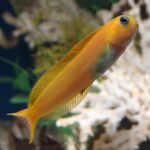
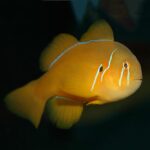


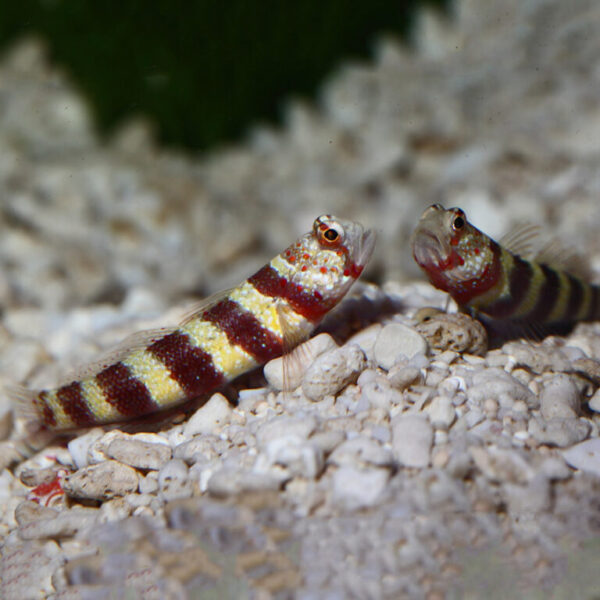
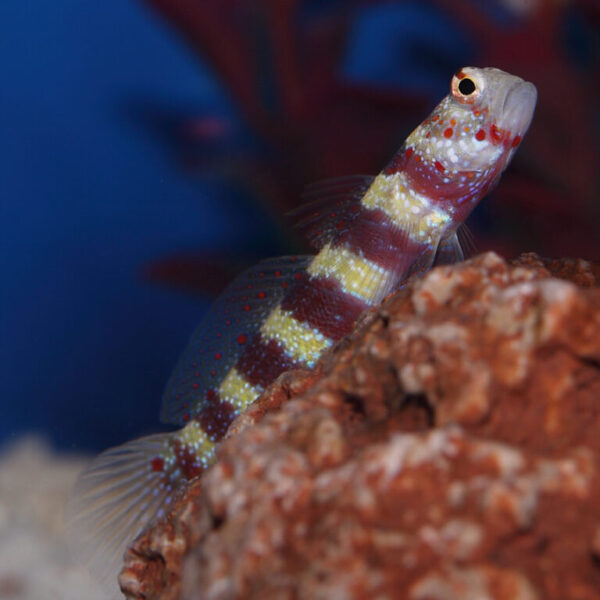
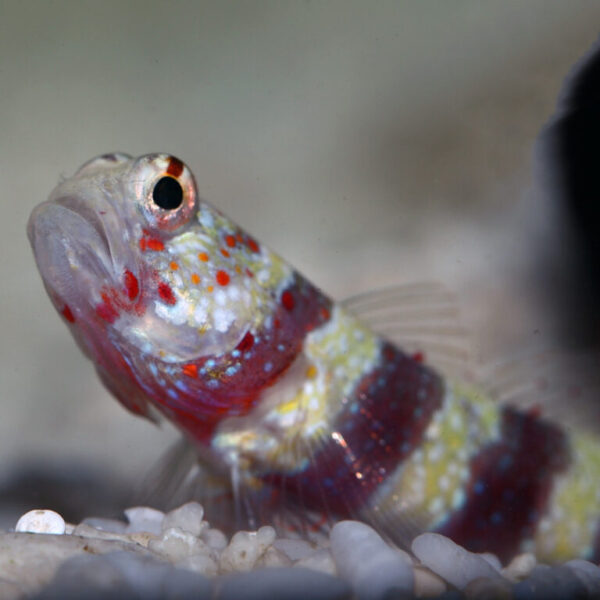
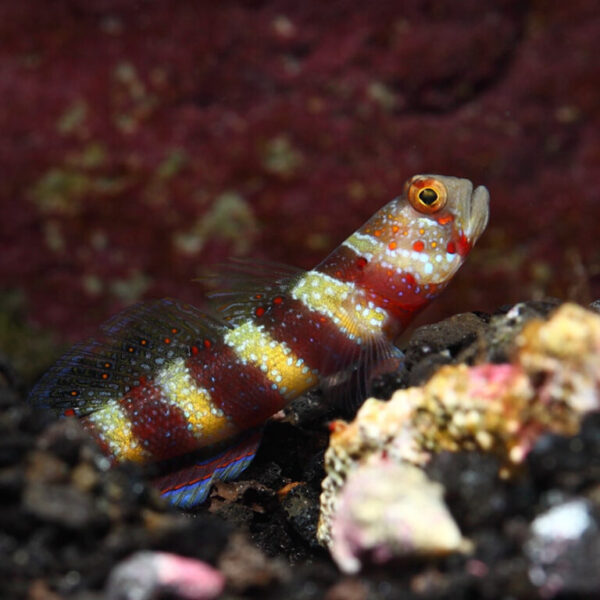
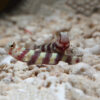
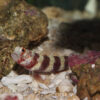
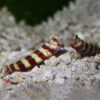
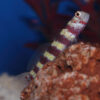
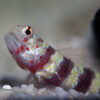


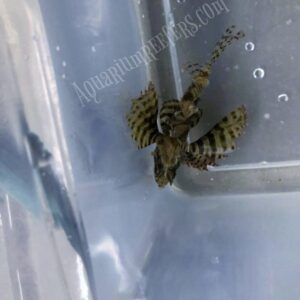


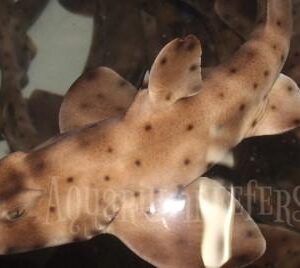
 NYOS Coral Nectar
NYOS Coral Nectar
Reviews
There are no reviews yet.